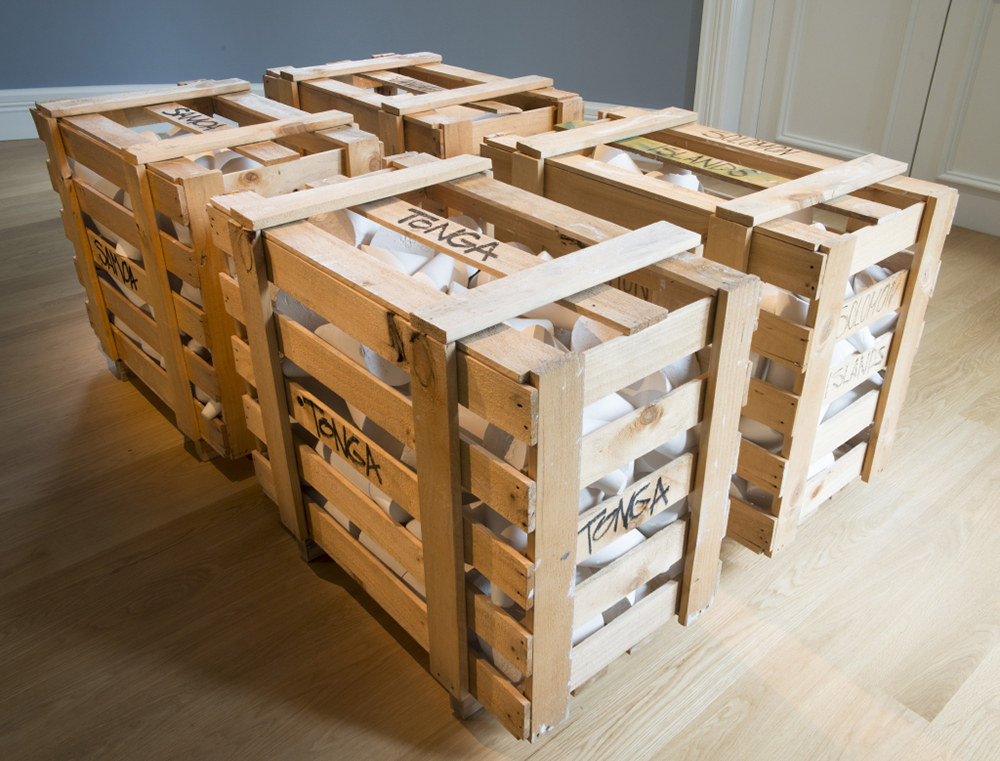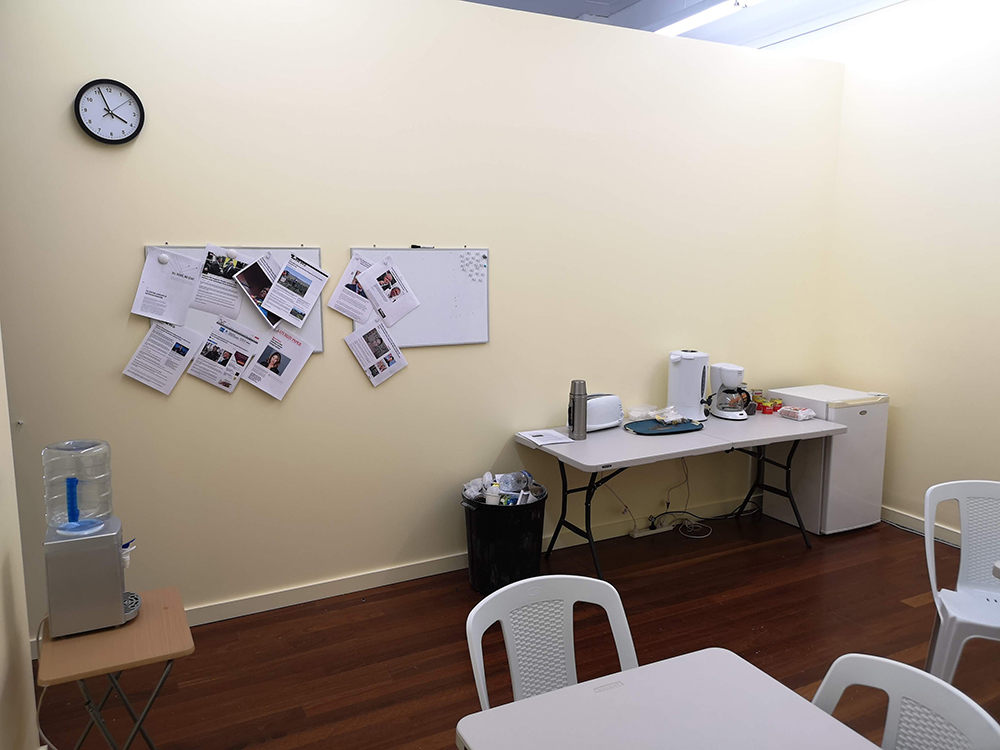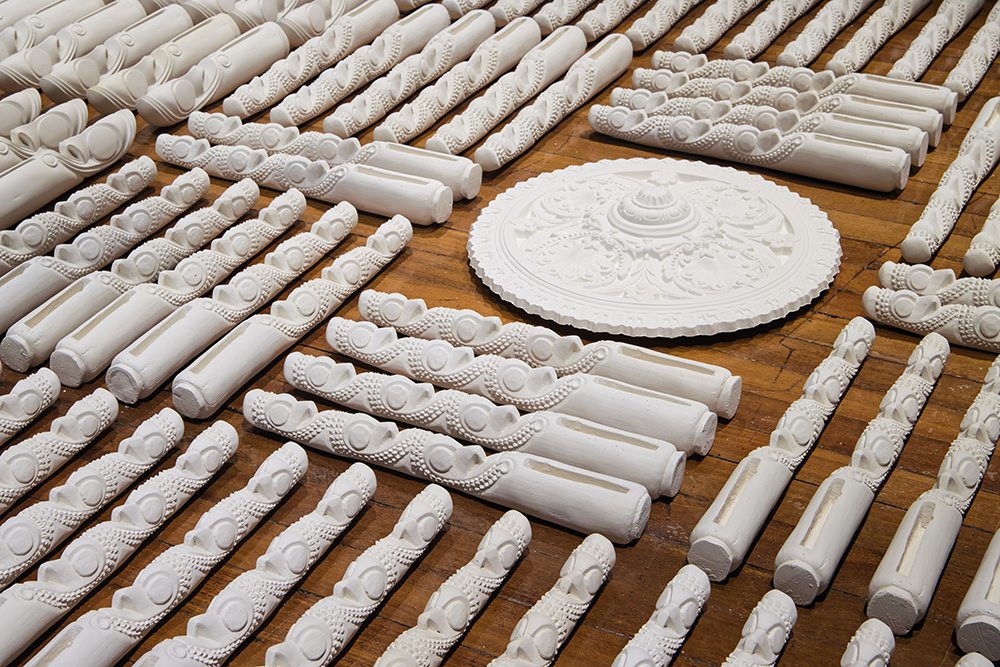Gus Fisher Gallery presents the first collaborative exhibition between fourth-generation Australian South Sea Islander artist Jasmine Togo-Brisby and Aotearoa-based Tongan artist John Vea. Often compared through their research-driven practices that address themes of migrant labour and the Pacific slave trade, Outcast enables a meeting point between the artist’s work and a shared space for new conversations to emerge.
The exhibition’s title alludes to the margins within which Pacific people often work and to the process of casting which the artists use as a methodology for making. Bringing together new and existing work, with a focus on object-based installations, both artists employ plaster as a material to shape, mould and replicate existing forms.


Vea’s Import/Export (2008-16) is extended through the addition of cast taros, resulting in an overflow beyond the crate’s margins. Created in reference to the Recognised Seasonal Employer Scheme established by the New Zealand Government in 2007, Vea’s installation takes on further resonance in 2023 following the catastrophic weather events in Aotearoa which led to the displacement of hundreds of Pacific workers after their accommodation was flooded. Situated in Gallery 2 is a restaging of Vea’s Section 69ZD Employment Relations Act 2000 (2019). Informed by the artists experience as a minimum-wage labourer at a New Zealand potato-chip plant, Vea has created a smoko room where visitors, staff and workers alike can take a break at scheduled times throughout the day. By examining tropes of migration and gentrification and their existence within the Pacific, Vea’s practice prefaces the voices and lived experiences of migrant workers from a Pacific perspective.

Investigating complex relationships of power, cultural identity and political systems, Togo-Brisby examines the historical practice of ‘blackbirding’, the romanticized colloquialism for the Pacific slave trade. A major new installation occupies the Dome Gallery, its scale and placement mirroring the Art Deco glass dome and its sunburst design. Comprising a central rosette panel surrounded by plaster-cast Vanuatu tam tam drums, Togo-Brisby brings together significant cultural icons of Vanuatu culture and society and appropriated designs of ornate pressed-tin panels by the Sydney-based Wunderlich family. For the artist, Wunderlich designs are an enduring physical manifestation of a colonial legacy and present a fraught personal history: Togo-Brisby’s great-great-grandparents were abducted in Vanuatu and taken to Sydney, where they were acquired as house slaves by the Wunderlich family.
Also featured is a major new nemasitse (Ni-Vanuatu barkcloth) by Togo-Brisby and a joint project by the artists which draw on their shared interest in branding and labour. This newly collaborative project brings together their shared interest in labour and branding through the production of two bespoke t-shirt designs. The t-shirts are inspired by the Australian workwear brand Hard Yakka and adapt the font and colours of their red and white logo.
Shaped by the artists own histories and experiences, Outcast reflects a process of talanoa where each artwork is part of a shared story of ideas and encounters.






